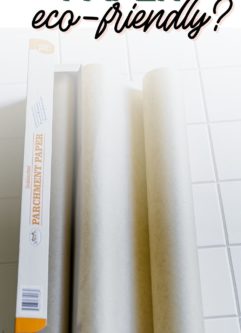Is Parchment Paper Eco-Friendly?
Wondering if parchment paper is eco-friendly? This sustainable kitchen guide explains what parchment paper is, how it’s made, how to dispose of it, and greener alternatives to using parchment paper in the kitchen.
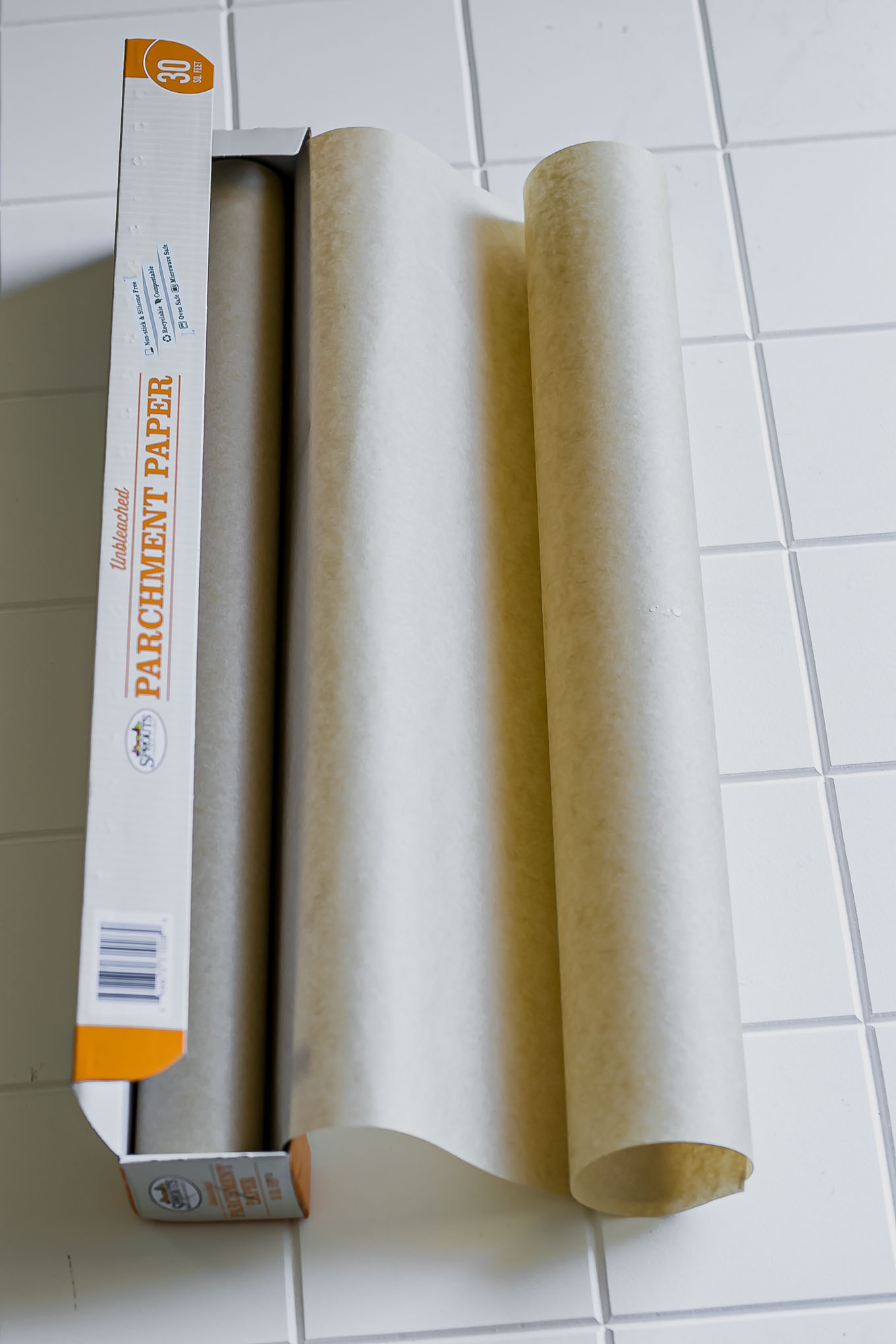
Want to Save This Recipe?
Enter your email & I’ll send it to your inbox. Plus, get new plant-based recipes in your inbox!
By submitting this form, you consent to receive emails from Fork in the Road.
Do you use parchment paper in the kitchen? While it has many uses – from baking to food storage – any single-use product that is thrown out will have a much higher environmental footprint than alternatives you will use over and over again.
While parchment paper is a more sustainable alternative to some kitchen products (like wax paper), it is not an environmentally friendly choice because of how it’s processed and because it is typically used once and thrown out.
👉 Want to learn more about whether parchment paper is environmentally friendly and tips for sustainable parchment alternatives? Read on!
❓ What is parchment paper?
Parchment paper, also known as baking paper, is a type of non-stick paper that is commonly used in cooking and baking. It is made from two main components: wood pulp and silicone. This combination of materials gives the parchment paper its distinctive non-stick properties, making it ideal for use in cooking and baking without requiring the use of additional oils or butter.
👉 Types of parchment paper
There are two main types of parchment paper: brown and white.
- Brown parchment paper: made from wood pulp that has not undergone the bleaching process (sometimes referred to as unbleached parchment paper).
- White parchment paper: also made from wood pulp, however white parchment pulp is bleached to remove the brown color (also making it less environmentally friendly)
Parchment paper is coated with silicone to give it its non-stick properties (similar to wax paper, which is coated in a wax veneer), but this also makes it less environmentally friendly. Rarely, parchment paper is sold without the silicone coating.
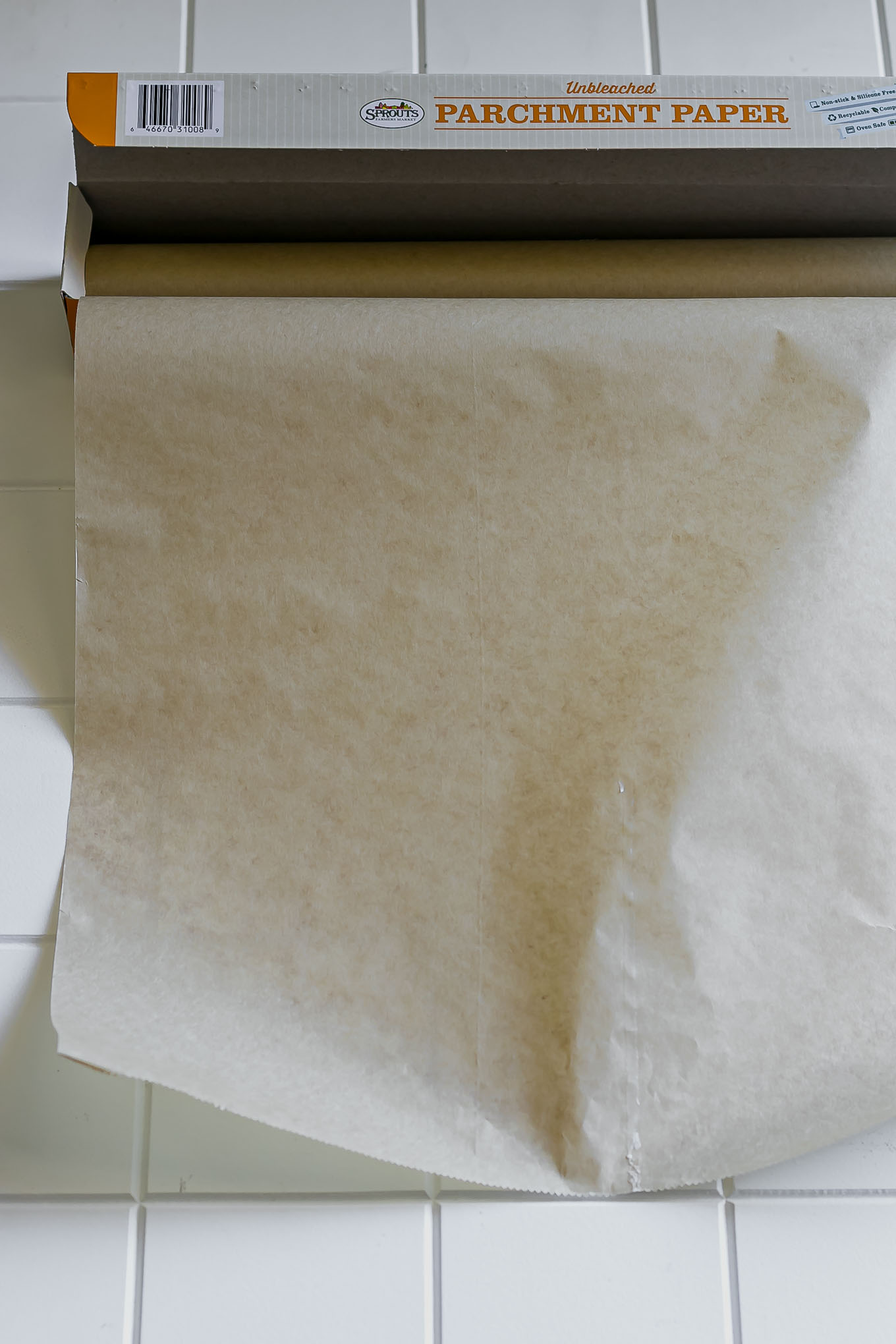
👩🍳 Parchment paper kitchen uses
There are a variety of ways that parchment paper can be used in the kitchen. For example, it is commonly used to line baking trays and pans, preventing food from sticking and making cleanup easier. It can also be used as a wrapping or covering for meat or fish when roasting or grilling, helping to prevent juices from dripping onto the cooktop or grill.
Parchment paper is also a popular choice for lining cake pans when baking cakes or cupcakes, as it prevents the cake from sticking to the sides of the pan and makes it easier to release the cake once it is cooked.
When deep frying foods, parchment paper can be used as a liner for the fryer to prevent oil from splashing out and making a mess.
Parchment paper is also commonly used by pastry chefs to roll out dough, as it provides a non-stick surface that prevents the dough from sticking to the rolling pin or countertop.
🪵 How parchment paper is made
Parchment paper is made by combining wood pulp and silicone in a process that involves several steps.
- The first step is to treat the wood pulp with chemicals to break down the fibers, making it easier for them to bind together when heated.
- The next step is to mix the treated wood pulp with silicone oil or wax, which acts as a binding agent. This mixture is then passed through a large, heated roller to create thin sheets of parchment paper.
- Once the parchment paper has been formed, it is cut into various sizes and packaged for sale.
Want to watch parchment paper being made? This video from the Science Channel shows the steps to produce parchment paper.
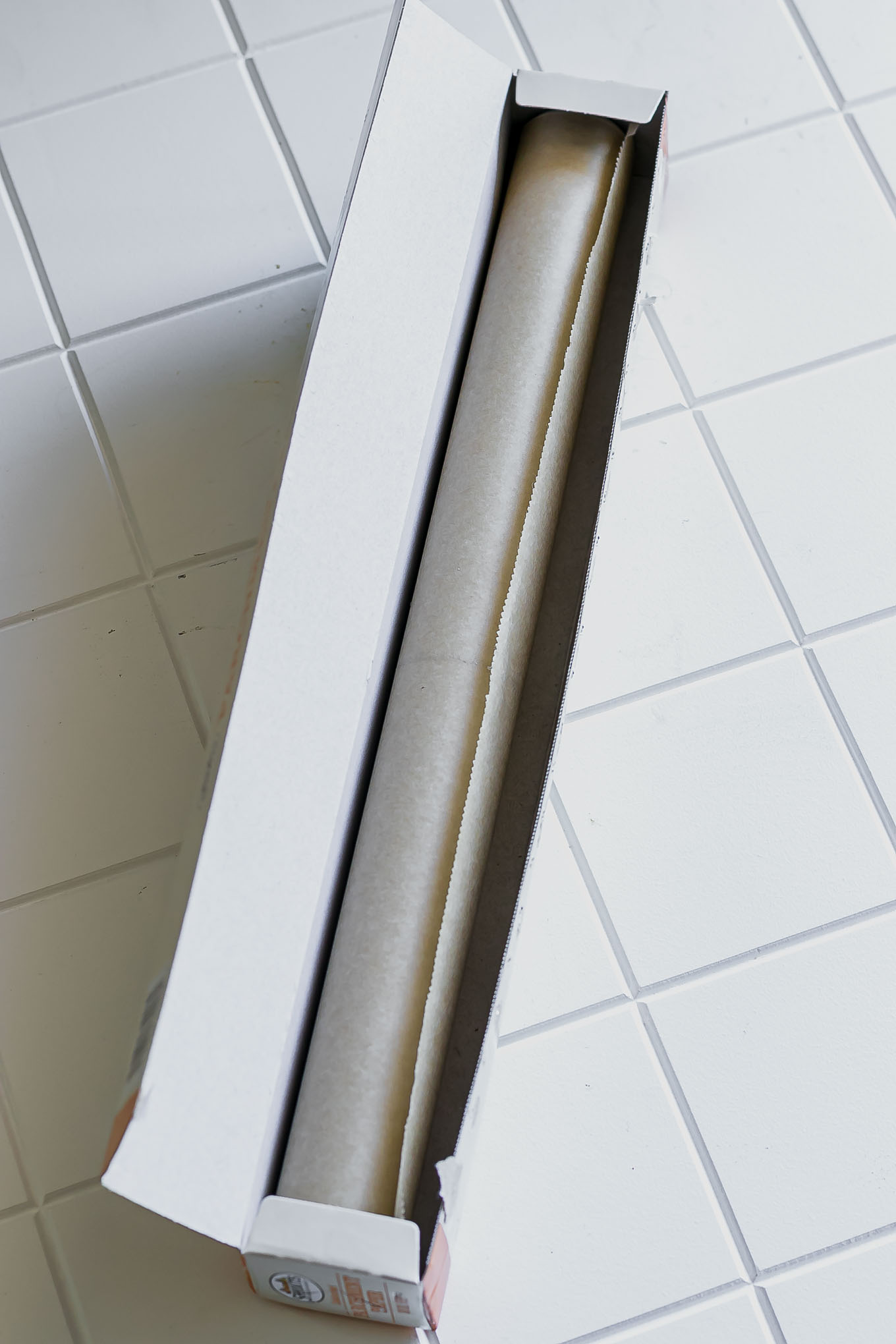
🗑 How to dispose of parchment paper
Parchment paper can be disposed of in a number of ways, depending on the type that you have. Brown parchment paper is biodegradable and can be composted, while white parchment paper is not as easily broken down and should be recycled.
Compost: Compost parchment paper by either placing it in an outdoor compost bin or by adding it to your home compost pile. To speed up the composting process, cut or tear the parchment paper into smaller pieces and soak them in warm, soapy water before adding it to your compost pile. You can expect the breakdown process to take roughly two to six weeks. Parchment paper that has been soaked in oil should not be composted.
Recycle parchment paper: Due to the parchment paper being coated with silicone, it makes it more difficult to recycle. This is because the components of the paper won’t easily separate. To verify that your paper can be recycled, reach out to your local recycler before putting parchment in your recycling bin. Parchment paper that has been soaked in oil should not be recycled.
Reuse parchment paper: Parchment paper can be reused multiple times, although it will eventually lose its non-stick properties. To reuse parchment paper, simply wash it with soap and water after each use and allow it to air dry. Ideally, parchment paper can be reused as long as it hasn’t been used at temperatures that exceed the recommendation of the manufacturer (this is generally approximately 425 degrees Fahrenheit).
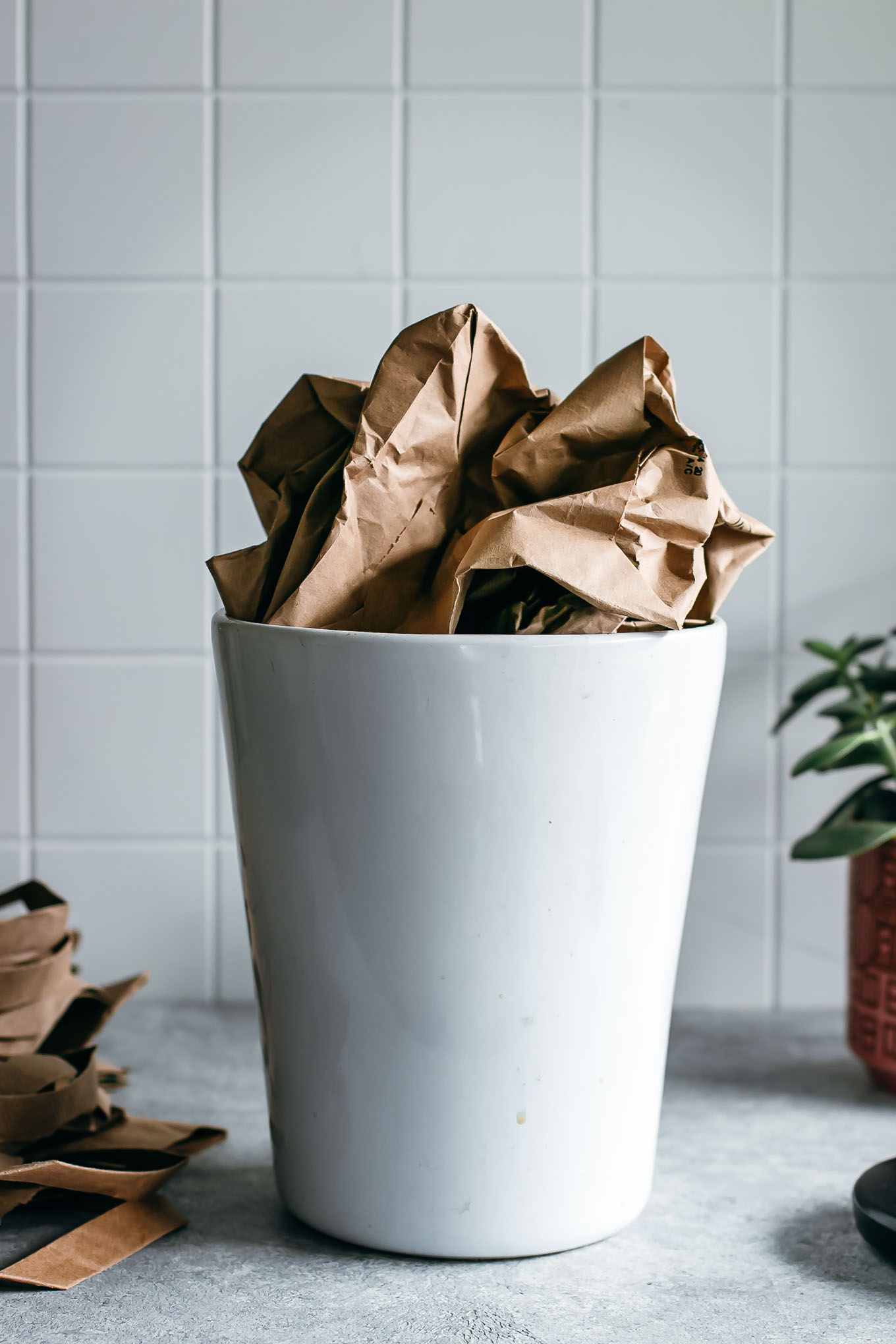
♻️ Eco-friendly parchment paper alternatives
There are a number of eco-friendly alternatives to parchment paper that can be used in the kitchen.
- Silicone baking mats: Silicone baking mats are made from food-grade silicone and can be used in place of parchment paper for lining baking pans, trays, and other surfaces. They are non-stick, reusable, and often dishwasher safe and help to reduce the amount of waste that you have and that goes into the landfill. Here’s our favorite brand of silicone baking mats, Silpat.
- Oil for greasing pans: A simple alternative to parchment paper is to use oil to grease your baking pans or trays. This will prevent food from sticking, making it easier to release once it is cooked.
Overall, there are a number of different ways to dispose of or reuse parchment paper, as well as a range of eco-friendly alternatives that can be used in the kitchen. This makes it easy to choose the best option for your needs when cooking and baking.
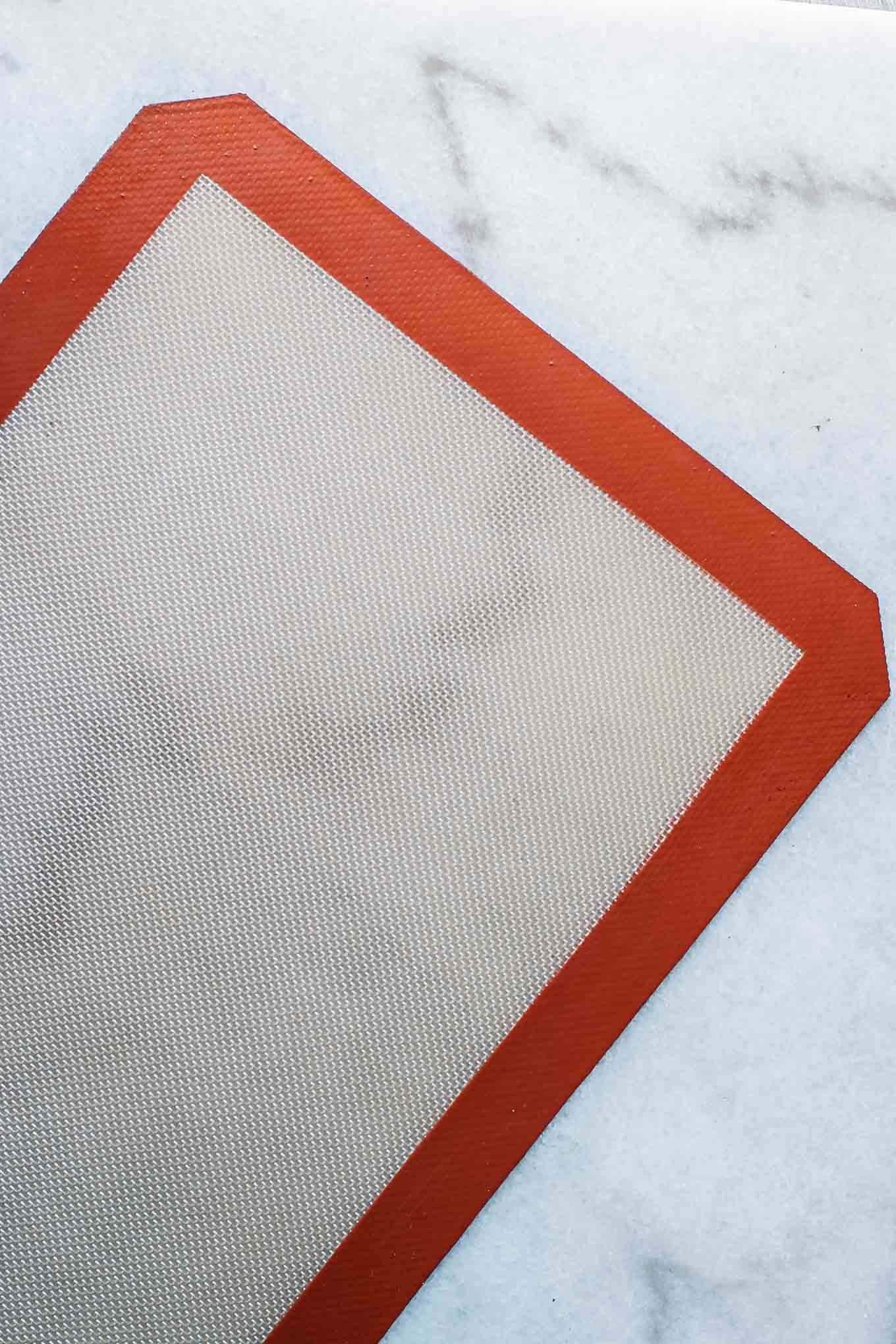
🌍 More eco-friendly kitchen guides
Want more tips for going green in the kitchen? Check out our other eco-friendly guides:

